How houseplants became essential to the great indoors
Phytomania
-
Interior vignette featured in the book Urban Jungle: Living and Styling with Plants
Photo © Lina Skukauskè
-
Charles and Ray Eames in their iconic California home
Photo © Vitra Design Museum
-
Interior vignette featured in the book Urban Jungle: Living and Styling with Plants
Photo © Jocelyn Hefner
-
Interior vignette featured on Urban Jungle Bloggers
Photo © @meltdesignstudio on Instagram
-
Midcentury Teak Planter
Photo © de Kameleon
-
Ron Goh's New Zealand home, available on AirBnb and featured on Instagram
Photo © Ron Goh; @MrCigar on Instagram
-
Ron Goh's New Zealand home, available on AirBnb and featured on Instagram
Photo © Ron Goh; @MrCigar on Instagram
-
Interior vignette featured in The Hibiscus Room tumblr
Photo © Jamie Song; @jamies_jungle on Instagram
-
Interior vignette featured in The Hibiscus Room tumblr
Photo © The Hibiscus Room on Tumbler
-
Interior vignette featured in The Hibiscus Room tumblr
Photo © The Hibiscus Room on Tumbler
-
Barcelona's Horta House featured in The Hibiscus Room tumblr
Photo © The Hibiscus Room on Tumbler
-
APTM Berlin
Photo © Ramtin Zanjani for Pamono
The last few years have seen ferns and palms, succulents and herb gardens, flourish across textiles and fashion; in exclusive boutiques and high-end restaurants; in workplaces and artworks—and of course on social media. It’s more than just a trend, too; research has shown that indoor plants not only reduce air and noise pollution, they also boost wellbeing and reduce stress. Plants are some of the most effective design tools we have, even if they are not, themselves, designed objects. How did that happen? Today, we cast a look back at the history of houseplants and devote some thought to the use of greenery in the design landscape of the last century.
These days, houseplants are a relatively low-cost way to enhance an interior, but that’s actually a new phenomenon. For centuries indoor plants were a luxury indulged only by the extremely wealthy. As early as 1,000 BC, plants were used indoors for ornamental purposes in China. Since this was a resource-intensive practice of plant cultivation that was not intended for productive purposes, houseplants were primarily status symbols. From the 6th century onward, Japanese emissaries to China gradually adopted the culture of container plantings. The art of Bonsai subsequently became interwoven with Zen Buddhist traditions; eventually these intricate miniature plants and landscapes became prized as signs of elite taste and learning.
Indoor plants were slower to reach Europe. When they did arrive, they were mostly concentrated around the Mediterranean: wealthy Greeks, Romans, and, on the other side of the sea, Egyptians began keeping decorative plants in terracotta pots around 400 BC. The custom seems to have collapsed along with the fall of the Roman Empire, and it wasn’t until the Renaissance—when European sailors began bringing back botanical samples from their forays into the tropics and the aristocratic fashion for orangeries and pleasure gardens took hold—that indoor gardening resurfaced in Europe. These imported plants were not equipped to survive the harsh northern winters, so cultivating them entailed a reliance upon heated glasshouses and dedicated gardening staff—expenses that were beyond any but the most affluent families. Indoor plants became, as they had been across Asia, the supreme status symbols, underpinned by codified hierarchies of indoor gardening achievements; forcing flowers to bloom in winter, for example, was considered particularly elite.
Fast-forward a couple of hundred years to the Victorian era and houseplants had, for the first time, taken root in middle class homes. Better and more affordable sources of heating finally meant that even those who weren’t in line for a throne were able to maintain plants indoors. Horticultural hobbies became a veritable obsession and every Victorian parlor was bursting with foliage. Such was the fervor that people scoured the English countryside for samples, and numerous species were reportedly eradicated from the wild as a result. Pteridomania—fern-fever—took hold. Where today we might shake our heads at people perishing while attempting to capture the ultimate selfie, in the Victorian era there were numerous tragedies when intrepid plant collectors reached a little too far out in pursuit of the ultimate specimen.
Rather than decorating conforming to architecture, the fad for decorating with plants dictated an entirely new architectural typology. Archetypal elements of Victorian architecture like bay windows and sun porches actually stemmed from the lust for indoors greenery. The architectural innovations provided the light, temperature regulation, and humidity that was required to nurture the fashionable houseplants of the day—many of them imports or hybridizations of tropical plants. Even those without a bay window could manage to introduce some flora to their living space through the newly developed Wardian cases—an early predecessor of the terrarium—something akin to a miniature glasshouse.
After the turn of the 20th century, however, as industrial-manufacturing technologies progressed and tastes slid towards the modernist ideals of simplicity and function, those cluttered Victorian interiors began to seem incredibly passé. The house jungles of the 19th century were gradually dismantled in favor of chic modernist functionality, or refined and glamorous Art Deco. The echoes of Pteridomania can nevertheless be readily observed in the art and graphic design of the Art Deco movement. Stylized ferns, exotic plants, and animals appeared everywhere from posters to decorative elements on designer furniture and on tableware and glassware in the 1920s and 30s.
The modernists, meanwhile, were all about purity and utility—orthodox modernism rejected all ornamentation—but foliage did not completely disappear from even the most austere mid-century layouts. The large glass curtain-walls that are so typical of modernist architecture inevitably brought the garden, at least visually, into the living space. Take the Villa Tugendhat that Mies van der Rohe designed in Brno, Czech Republic; the potted jungle on the extensive terrace and the iconic, green Barcelona Chairs beautifully harmonize. And before that, Frank Lloyd Wright was an early pioneer dedicated to bringing nature in conversation with modernist architecture, often working with built-in planters and glassed conservatories, incorporating plants into the very structure and layout of the home.
Midcentury Scandinavian designers like Arne Wahl Iversen created furniture pieces that incorporated planters, clearly defining a role for greenery in the interiors they envisaged. Sure, the cascading ferns were gone, but sculptural and low-maintenance potted plants or architectural cacti were fixtures of modernist interiors. Ray Eames is said to have had a particular penchant for geraniums and flowering potted plants; often displaying them on shelves amongst her books at the Case Study House No. 8 in Los Angeles. Late modernist design was also responsible for a renewed appreciation of indigenous plants, particularly in the Americas.
The general relaxing of modernist strictures after the Second World War and the rise of iconoclastic movements like Radical Design, and post-modernism saw a return of more natural chaos to interior design. Exuberance and abundance were back in fashion in the 70s and 80s when it came to indoors greenery. So much of late 20th century design was intent on pulling down the monolith of modernism that had dominated the design landscape for so long. Iconic designs like the Gufram Cactus Coat Stand (1972) seemed to directly poke fun at the symbol of modernist greenery. Rather than functionalism for all, the ethos was about individuality and a counter-culture that, ironically, led to a consumerist frenzy. Potted plants were everywhere; dripping from macramé hanging baskets, housed in wild plastic planters, and all over 80s graphic design.
Hop forward a couple of decades (we’ll happily skip the 90s era of plastic plants and flowers a la Taco Bell decor) and suddenly both the technological and cultural context was rife for another indoor plant explosion. The least experienced would-be gardener now has access to limitless know-how online, and technological advancements in the propagation of plants have seen the prices consistently fall, even as the variety of readily available species has exponentially expanded. With increasing apprehension about climate change and awareness of the wastefulness of consumerism has come a decided cultural shift towards embracing the natural—whether it be in food trends, textiles and clothing, or a resurgence of the indoor jungle. The rebirth of phytomania is more than just a millennial fancy; it represents a particular way of thinking about the world and the lived environment, which deserves serious consideration. But it’s also ok just to enjoy the fiddle-leaf fig because it’s a darn good-looking plant.
For more houseplant inspiration, check out Ron Goh on Instagram, The Hibiscus Room on Tumblr, and the Urban Jungle Bloggers who have just released this fab book on the subject!
You can also find a charming collection of vintage and contemporary plant décor that we put together here.
-
Text by
-
Gretta Louw
A South-African born Australian currently based in Germany, Gretta is a globetrotting multi-disciplinary artist and language lover. She holds a degree in Psychology, and has seriously avant garde leanings.
-
More to Love
M22 Table by João Carneiro and Ricardo Prata for Cuco

Yellow Lathed Planter by Harriet Caslin

Dolomite White Small Planter by Kana London

Orbite Large Plant Pot by Gumdesign for Offiseria

Medium FlowerTop from Studio Lorier

Deluxe Branch-Out Set from Studio Lorier
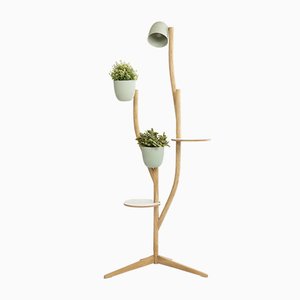
Swedish Teak Planter, 1950s
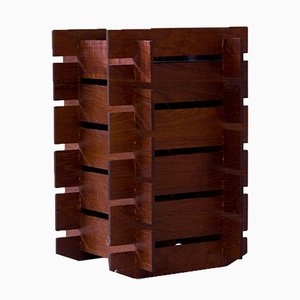
Danish Teak Planter by Aksel Kjaersgaard, 1970s
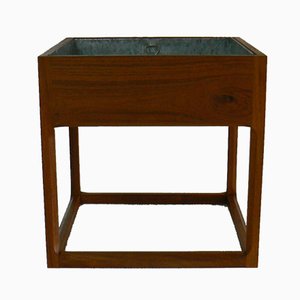
Vintage Industrial Planter
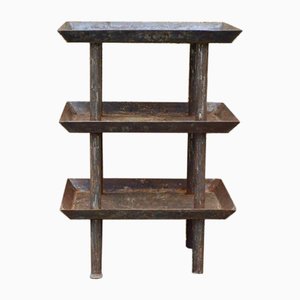
Vintage French Flower or Plant Pot from Suroy
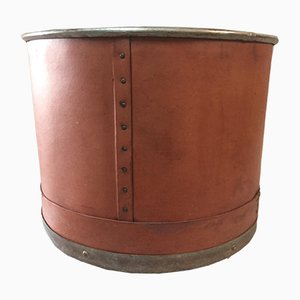
Knotted Planter by Harriet Caslin

Carat Planter by Urami Blu
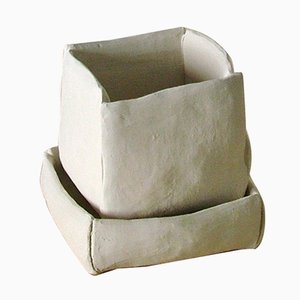
Large Hexagonal Planter, 1970s
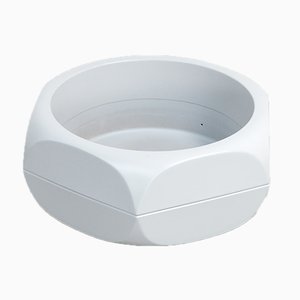
Rattan Foldable Plant Stand, 1960s

Vintage Danish Metal Vase or Pot from Just Andersen

Blue Marbled Bowl from Dana Bechert
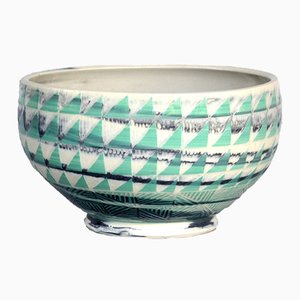
Distorted Flowerpots from Studio Lorier, Set of 3
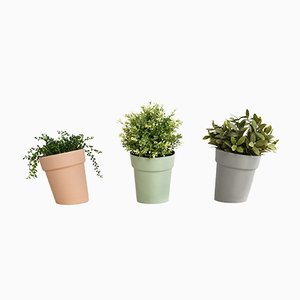
Greek Terracotta Flower Pot, 1970s

Blumenampel Edition, Hanging Planter by Zascho Petkow & Birgit Severin
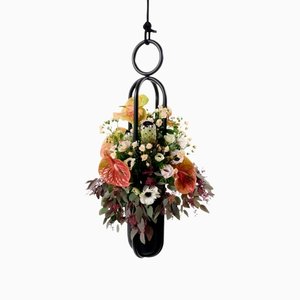
Vintage French Bamboo Plant Stand, 1950s
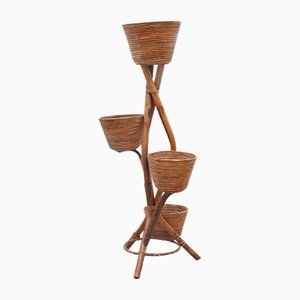
Lucille Grand Natural Flower Cocoon by LLOT LLOV
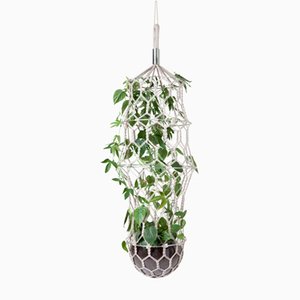
Ceramic Pot by Anna Lisa Jäderholm-Snellman, 1929
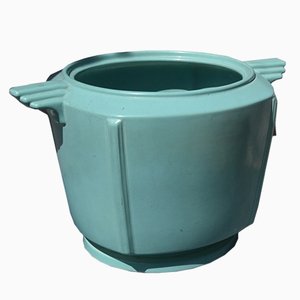












 Autumn Color from the Flowers in the Four Seasons by Utagawa Toyokuni Ⅲ (1853)
Photo © The Omiya Bonsai Art Museum Saitama
Autumn Color from the Flowers in the Four Seasons by Utagawa Toyokuni Ⅲ (1853)
Photo © The Omiya Bonsai Art Museum Saitama
 19th-century Wardian case with painted tin plate frame and four glass sides
Photo © Nicholas Watt, Sydney Living Museums
19th-century Wardian case with painted tin plate frame and four glass sides
Photo © Nicholas Watt, Sydney Living Museums
 Interior shot from Better Homes & Gardens (1959)
Photo © Better Homes & Gardens
Interior shot from Better Homes & Gardens (1959)
Photo © Better Homes & Gardens
 Interior vignette featured in the book Urban Jungle: Living and Styling with Plants
Photo © Anne Ji-Min Herngaard; @littlegreenfingers on Instagram
Interior vignette featured in the book Urban Jungle: Living and Styling with Plants
Photo © Anne Ji-Min Herngaard; @littlegreenfingers on Instagram

